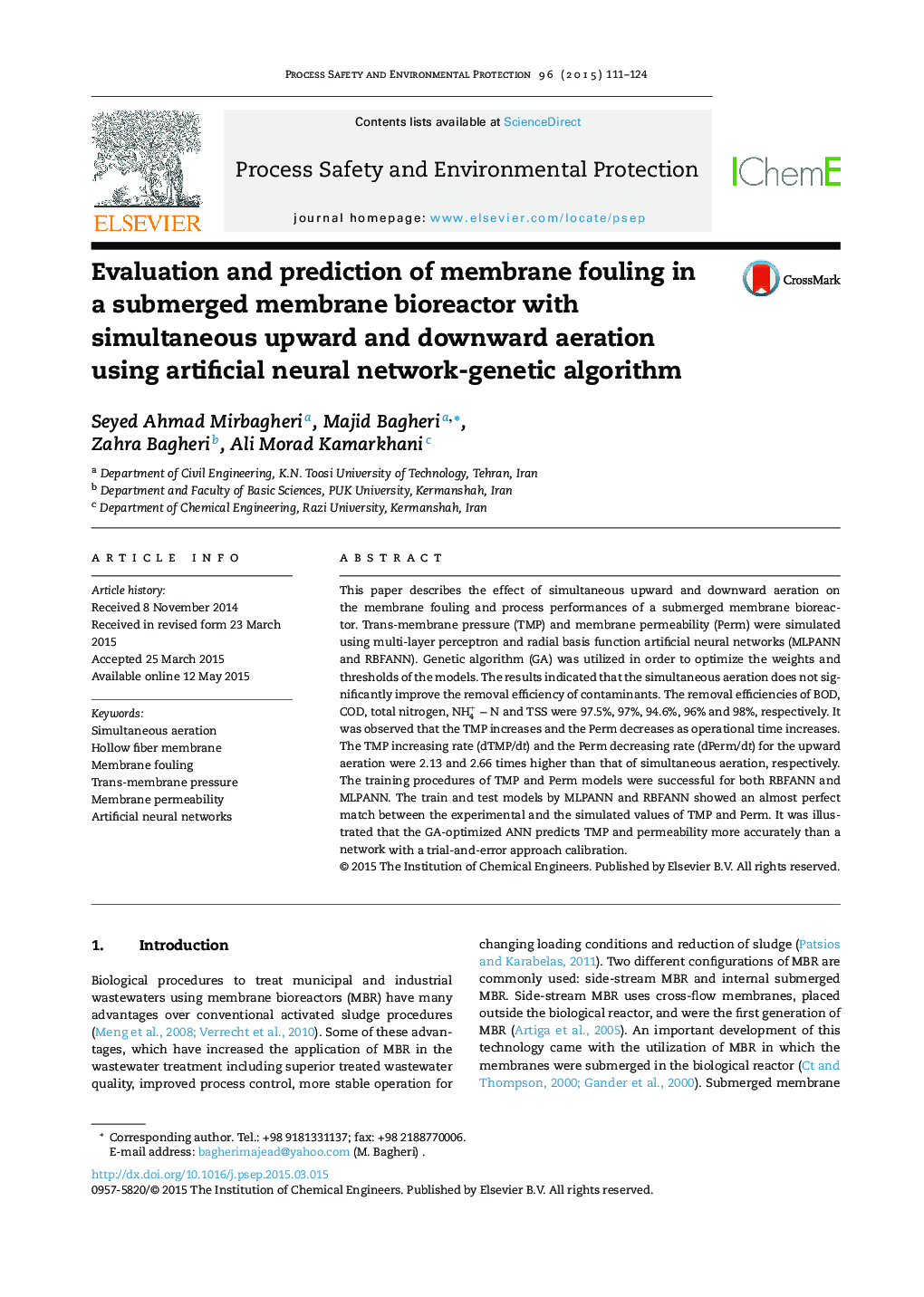| Article ID | Journal | Published Year | Pages | File Type |
|---|---|---|---|---|
| 588351 | Process Safety and Environmental Protection | 2015 | 14 Pages |
•Submerged membrane bioreactor with simultaneous upward and downward aeration.•Simulation of trans-membrane pressure and membrane permeability.•Radial basis function and multi-layer perceptron were used to perform models.•Genetic algorithm was utilized to optimize the neural networks.
This paper describes the effect of simultaneous upward and downward aeration on the membrane fouling and process performances of a submerged membrane bioreactor. Trans-membrane pressure (TMP) and membrane permeability (Perm) were simulated using multi-layer perceptron and radial basis function artificial neural networks (MLPANN and RBFANN). Genetic algorithm (GA) was utilized in order to optimize the weights and thresholds of the models. The results indicated that the simultaneous aeration does not significantly improve the removal efficiency of contaminants. The removal efficiencies of BOD, COD, total nitrogen, NH4+−N and TSS were 97.5%, 97%, 94.6%, 96% and 98%, respectively. It was observed that the TMP increases and the Perm decreases as operational time increases. The TMP increasing rate (dTMP/dt) and the Perm decreasing rate (dPerm/dt) for the upward aeration were 2.13 and 2.66 times higher than that of simultaneous aeration, respectively. The training procedures of TMP and Perm models were successful for both RBFANN and MLPANN. The train and test models by MLPANN and RBFANN showed an almost perfect match between the experimental and the simulated values of TMP and Perm. It was illustrated that the GA-optimized ANN predicts TMP and permeability more accurately than a network with a trial-and-error approach calibration.
